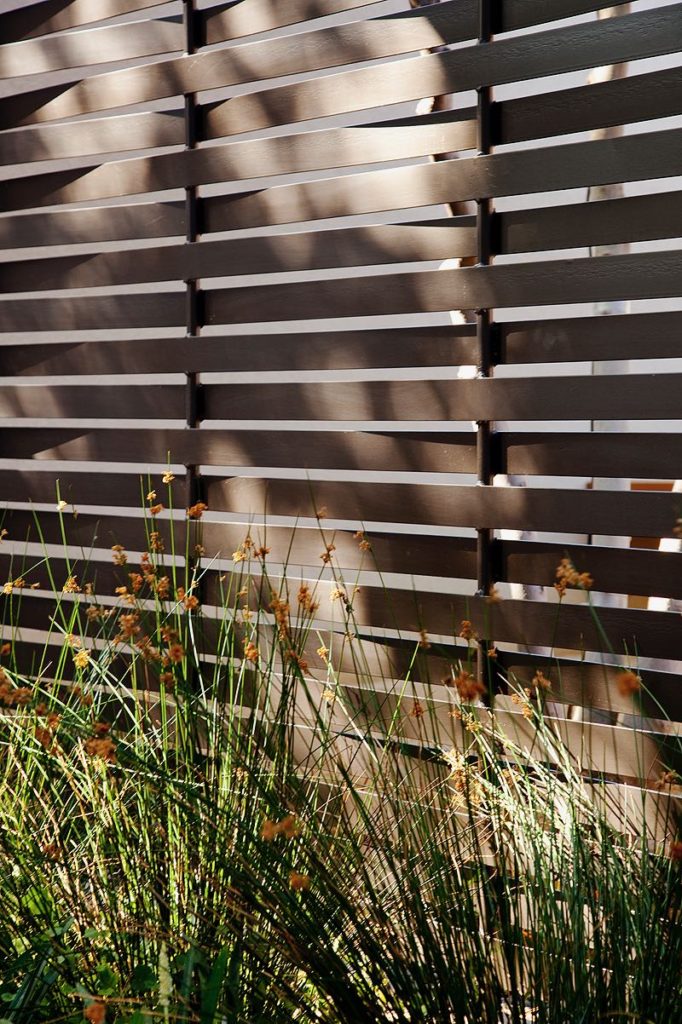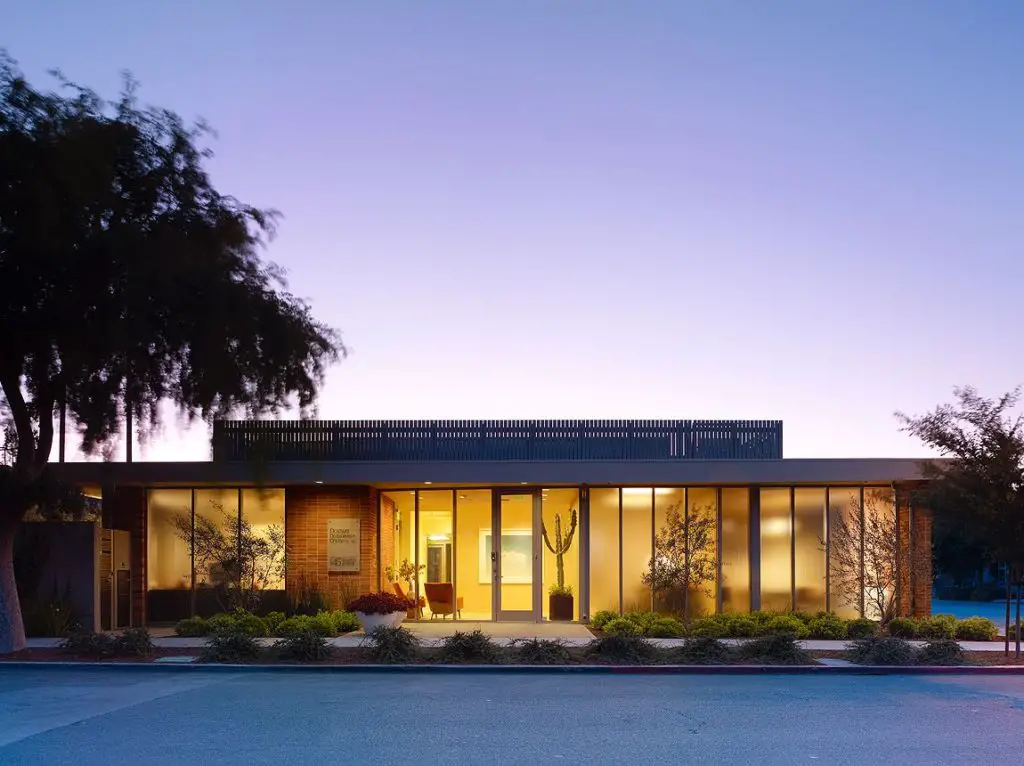
Just as with home environments, the composition of an office space makes a world of difference to its overall atmosphere.
San Francisco-based commercial real estate developer company Dostar Development desired an enjoyable courtyard area for work related gathers and called upon Scott Lewis Landscape Architecture.
In line with the company’s principles for smart design and high environmental standards, SLLA created a cosy outdoor area that tastefully integrates interior and exterior spaces of the beautiful midcentury modern office building.
Can you introduce yourself?
My firm, Scott Lewis Landscape Architecture, was founded in 1993 in San Francisco. We combine an emphasis on site sensitivity with a clear understanding of client objectives, an appreciation of architectural intent and an interest in progressive materials.
I have a particular appreciation for midcentury modern sites, having grown up near Mies van der Rohe’s Farnsworth House. My hometown boasts a Bruce Goff residence, Lustron houses, a Keck and Keck home and other midcentury innovative gems.
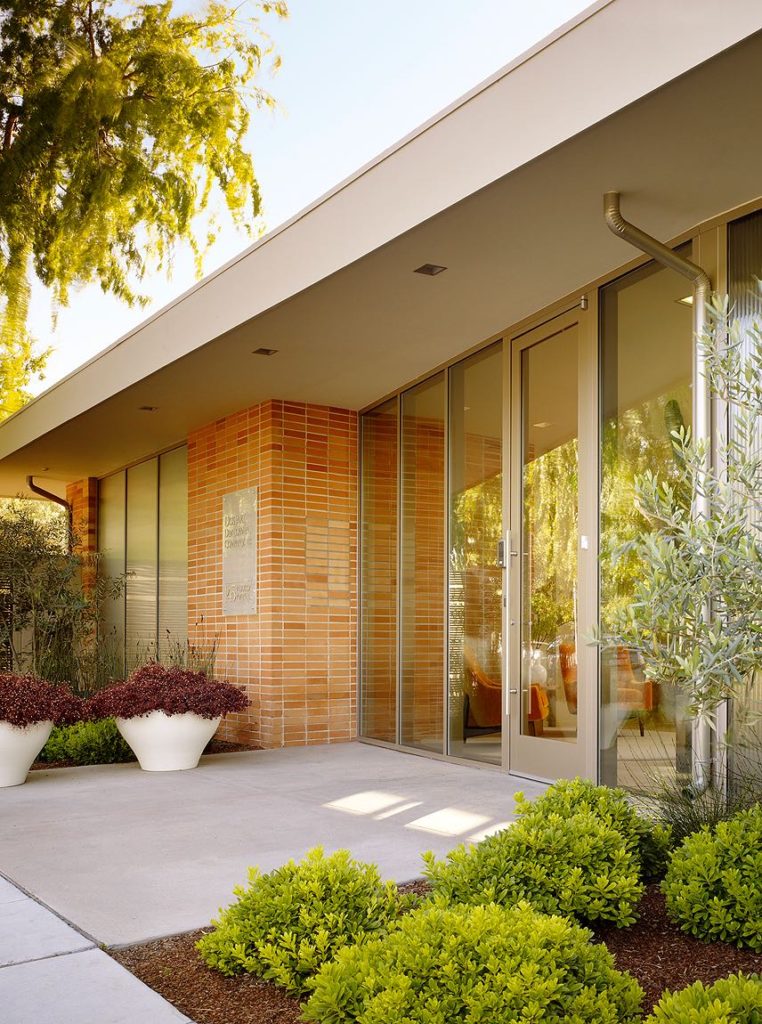
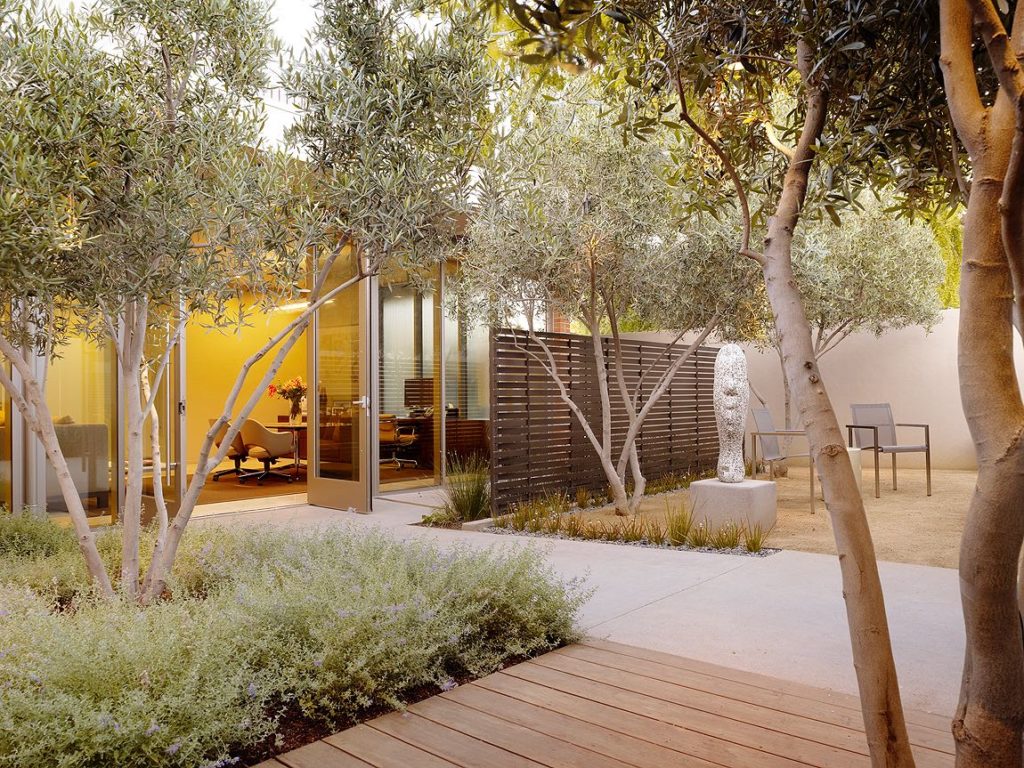
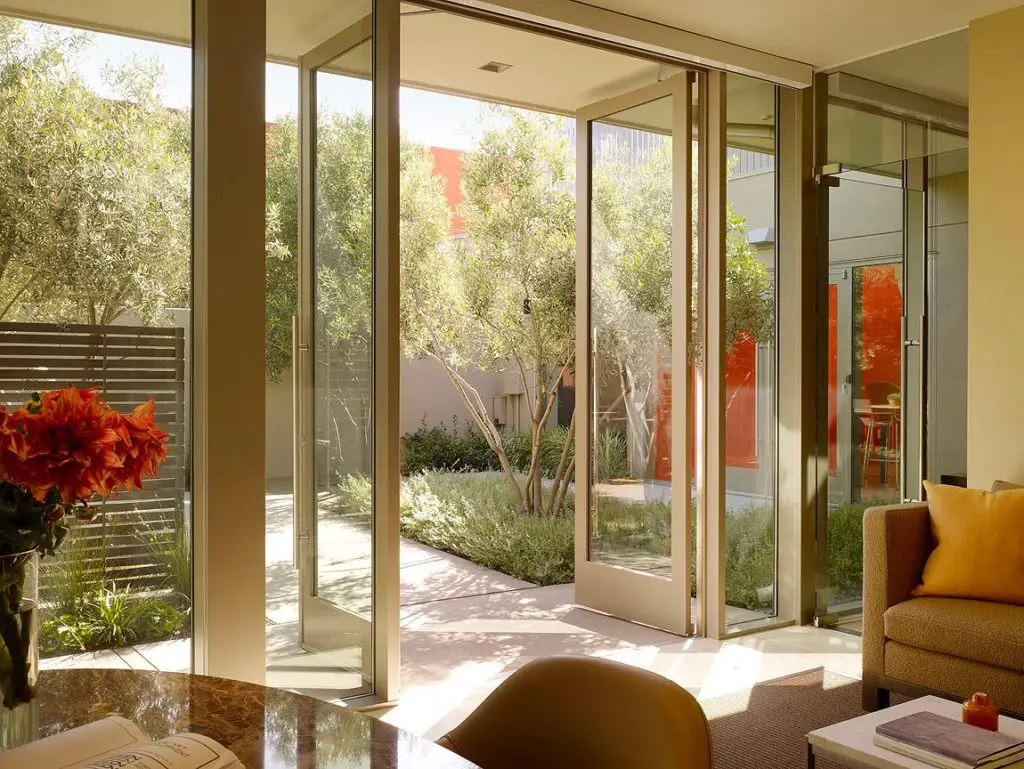
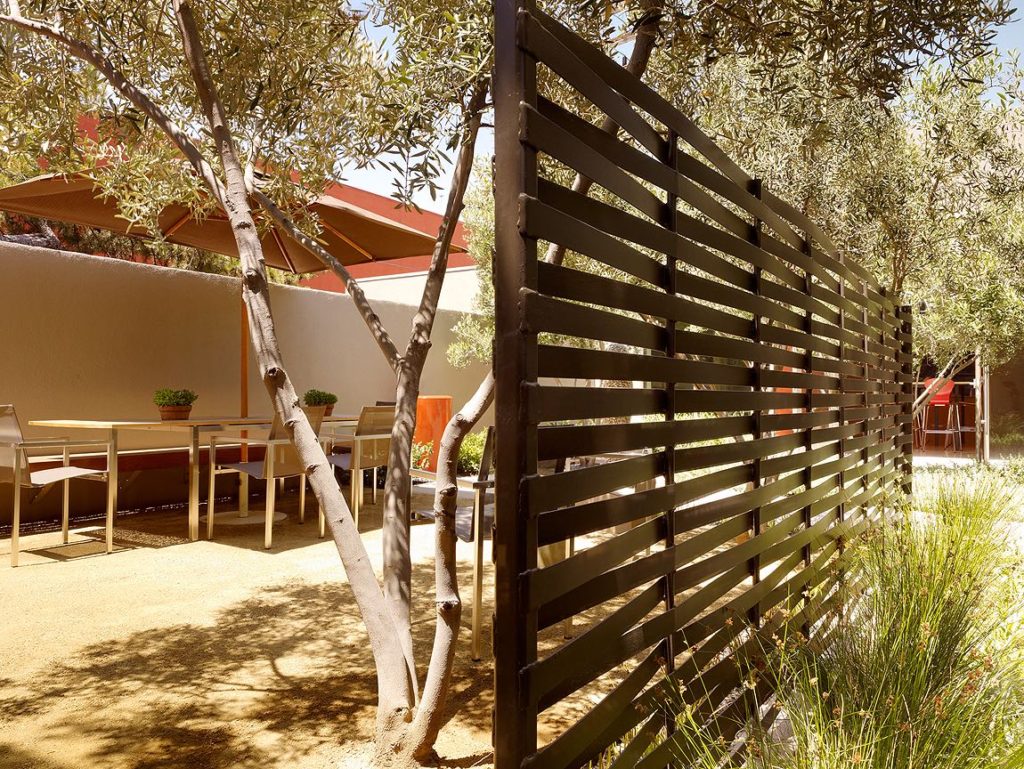
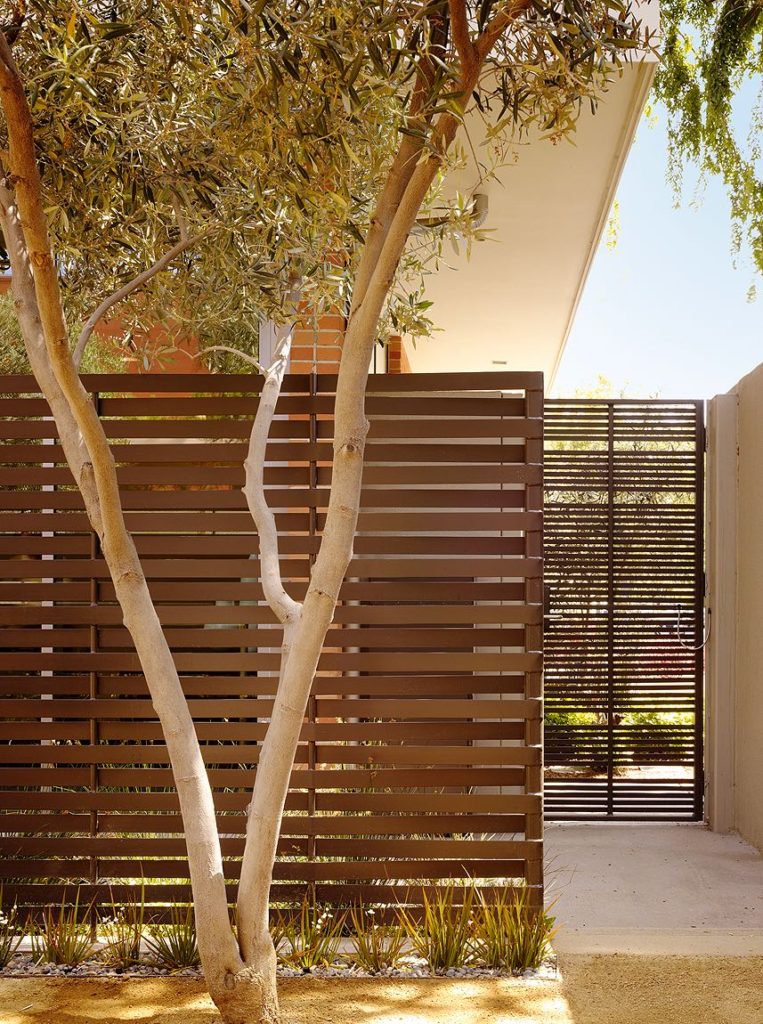
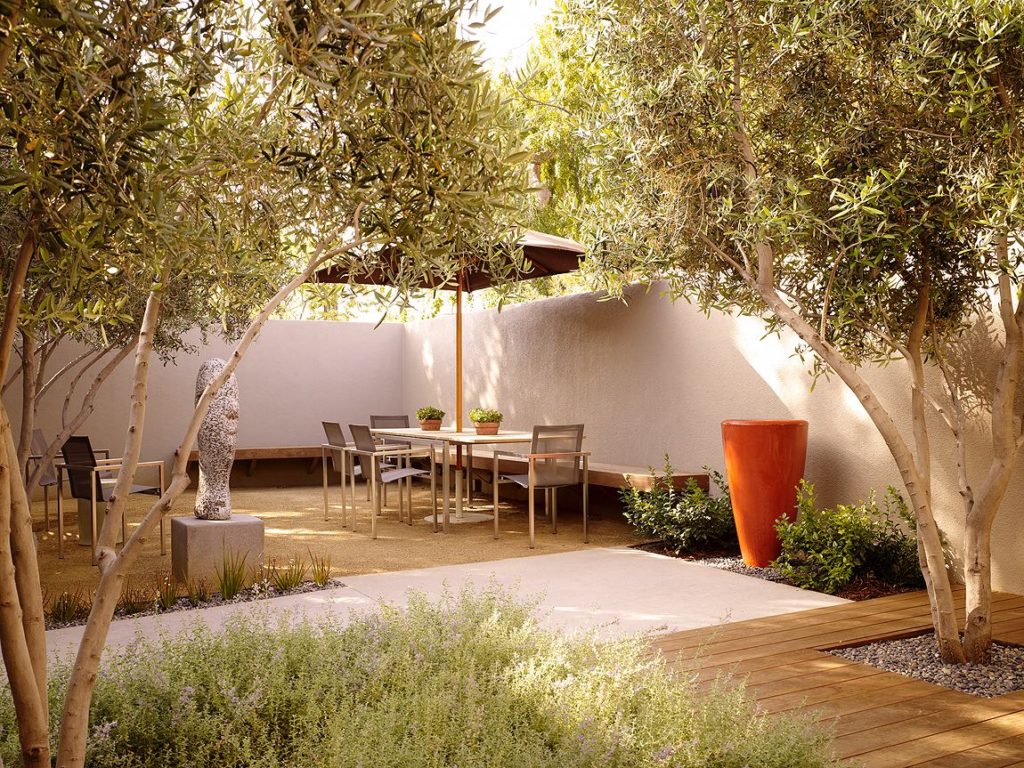
What was the overall vision – look, feel and functionality – for this landscaping project?
The Dostart Development building is the headquarters for a Silicon Valley-based commercial real estate developer, known for providing solutions based on smart design and high environmental standards.
The landscape portion included a courtyard, an auto court and the exterior of this 1940’s low-rise brick building. The renovated 3,700-square foot Midcentury Modern building on its 7,600-square foot lot was to include varied work spaces and landscape architecture that complemented the clean-lined aesthetic.
What inspired you during the project design process?
An outstanding element in this project was the client’s commitment to the entire design team synergy between landscape architecture, architecture and interior design. The result: a place where interior and exterior flow seamlessly together and make an elegant, functional environment for employees and visitors.
The LEED Gold-certified site is unified both inside and out by its light and airy quality, its highly functional spaces, its colors and its contemporary character. A strong design partnership achieved desirable space for employees to work, confer, and relax — both in interior offices and in the exterior landscape. The architect was Andrew Mann Architecture and the interiors firm was Martha Angus, Inc.
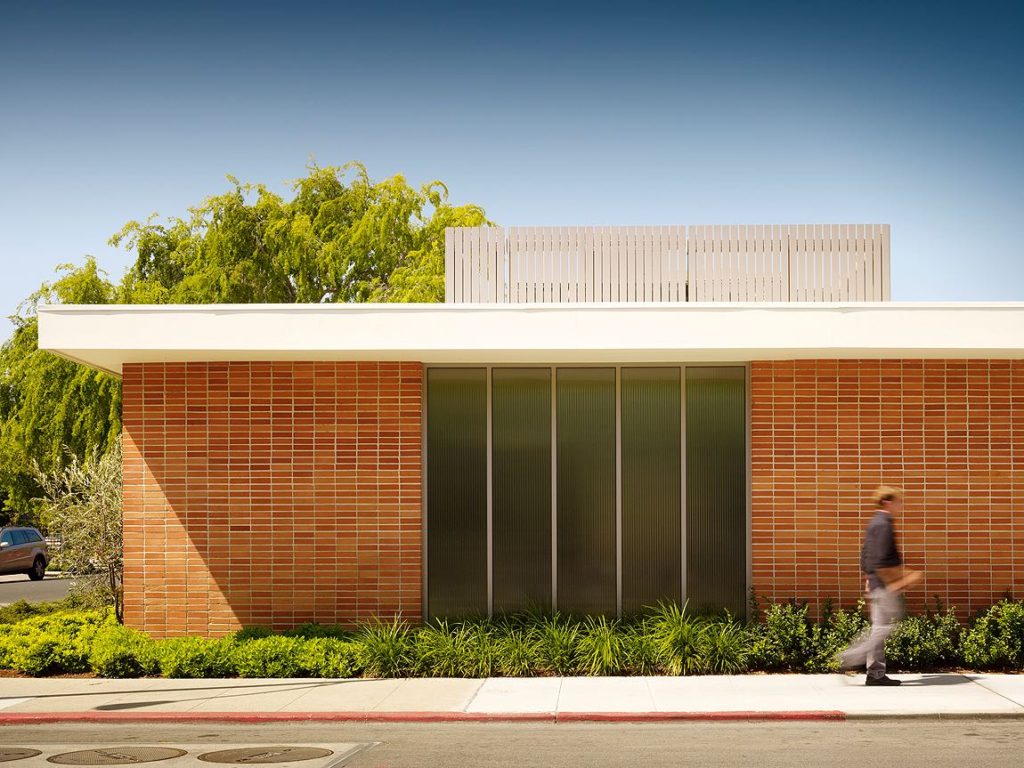
In your opinion, how does this office celebrate the midcentury modern principle of integrating the outdoors with the indoors? What details were added to make spaces relate to one another?
The architect maximized ceiling heights which allowed 12-foot-high exterior doors in the building. That key decision to bring more light and transparency into the building made the courtyard a major focal point. Offices were designed to incorporate views of the inviting courtyard, which decreased the need for artificial lighting in the building and made for an airy, bright space.
Our office positioned Olive trees in the courtyard to provide supplemental shading, which blocks low-angle south and west sunlight into the offices but maintains views. Olive trees were also used at the entry façade to screen early morning summer sun.
SLLA designed the courtyard to accommodate meetings, office parties and lunches. The bosque of Olive trees is aligned with the axes of the building’s internal corridors.
A metal screen provides privacy and serves as an architectural backdrop to the plants. The bosque of trees and the metal screen subdivide the courtyard space, thus avoiding unnecessary plant masses or walls that would negate the open quality.
Also, we developed the auto court to be an attractive entry for people arriving by car or bicycle. The specimen Norwegian Sunset Maple trees provide shade and designate the parking spaces. The vehicle gate at the auto court repeats the metal bar pattern from the courtyard gate.
The pots at the main entry were selected to complement the architectural style and interior furnishings. These pots were kept low to allow views into the entry foyer.
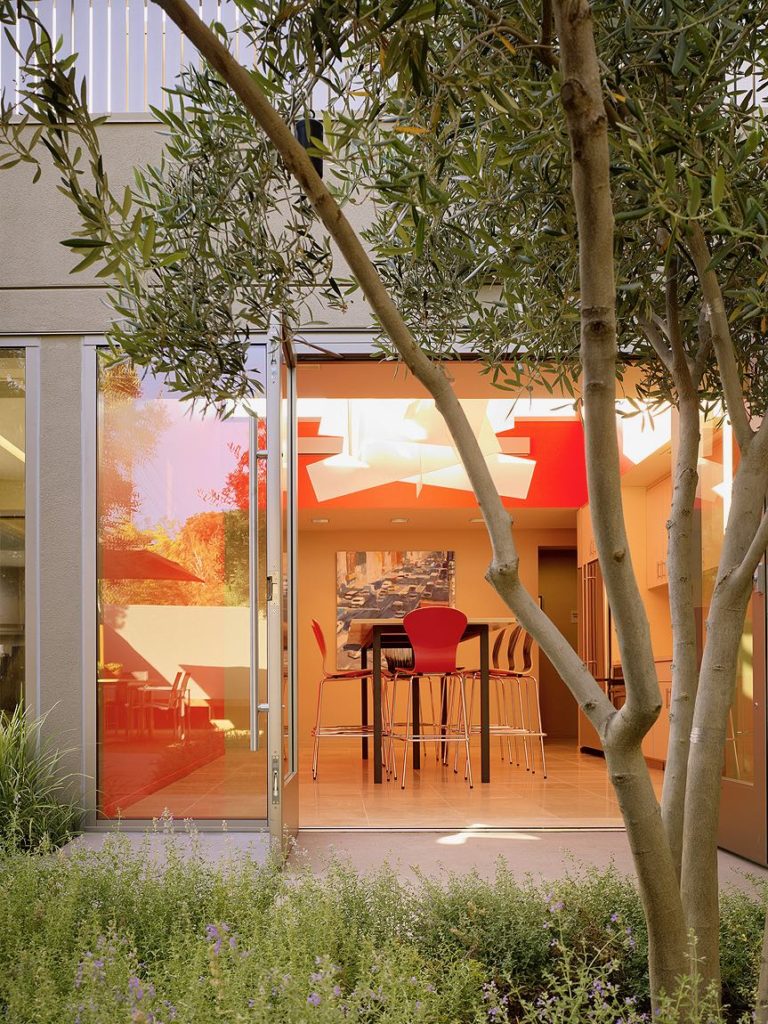
Which materials and plants were used and why?
My office, the architect and the interior designer synergized our palettes, resulting in exterior and interior sharing the same warm colors. Courtyard materials included warm gray-brown concrete with weathered texture, sienna-colored decomposed granite, chocolate brown metal fence and teak-colored Ipé wood. The auto court uses a stone brown tinted surface coat on the pavement.
The interior’s bold orange accent color is carried out to the landscape, through strategic orange accents in the courtyard fountain and Libertia grasses, and along the sidewalk with Dietes ‘Orange Drop.’
All the plant material is drought tolerant and low maintenance. The plant material also includes two native species: California Rush and California Coffeeberry.
How long did the landscaping project last? Any major setbacks, and if so, what?
Design schematic phase through construction completion took approximately two years. During construction, the design team utilized methods for a more sustainable site and process, which resulted in earning a LEED Gold certification.
Waste recycling was a major priority during renovation of the building and the landscape. Overall, 92% of construction waste was diverted from landfill. We designed the landscaping and irrigation systems to significantly reduce water consumption. The project uses just half of the total quantity of irrigation water that is allowed by the local city government. The system will use even less water as plants mature.
What is your favorite detail of the landscape and why?
The screen in the courtyard was a simple yet striking addition. Our office created a mock up, and the contractor was able to achieve the look within a commercial budget. The screen is not over-designed and functions well in giving privacy to some of the offices that border the courtyard.
Another aspect of note is that we were able to make the courtyard ADA compliant by using a series of gently sloping levels to compensate for a 6-inch grade change from inside to outside. The olive trees mark the route of access.
What advice/recommendations would you give to someone looking to renovate their yard?
Regardless of the scale or the purpose of the property, forming a strong professional team that works in unity is paramount.
